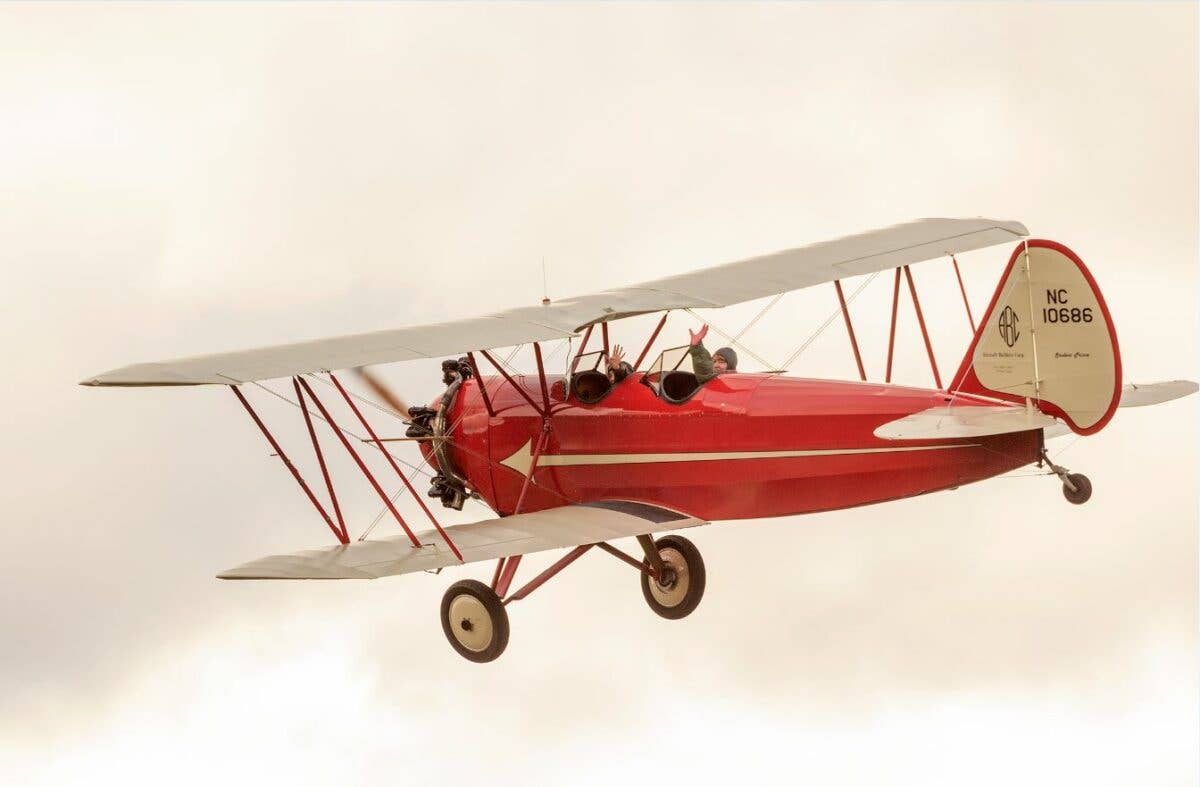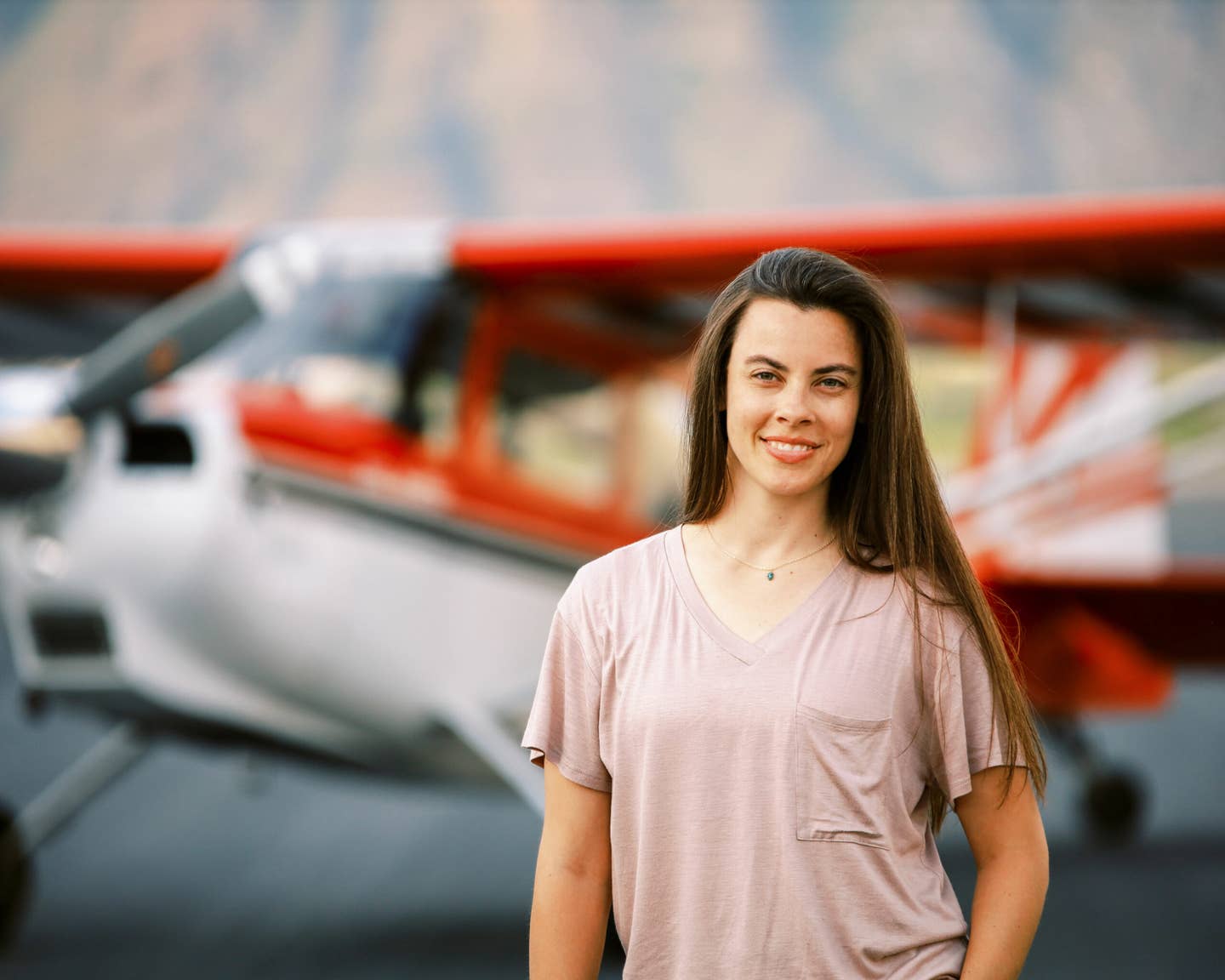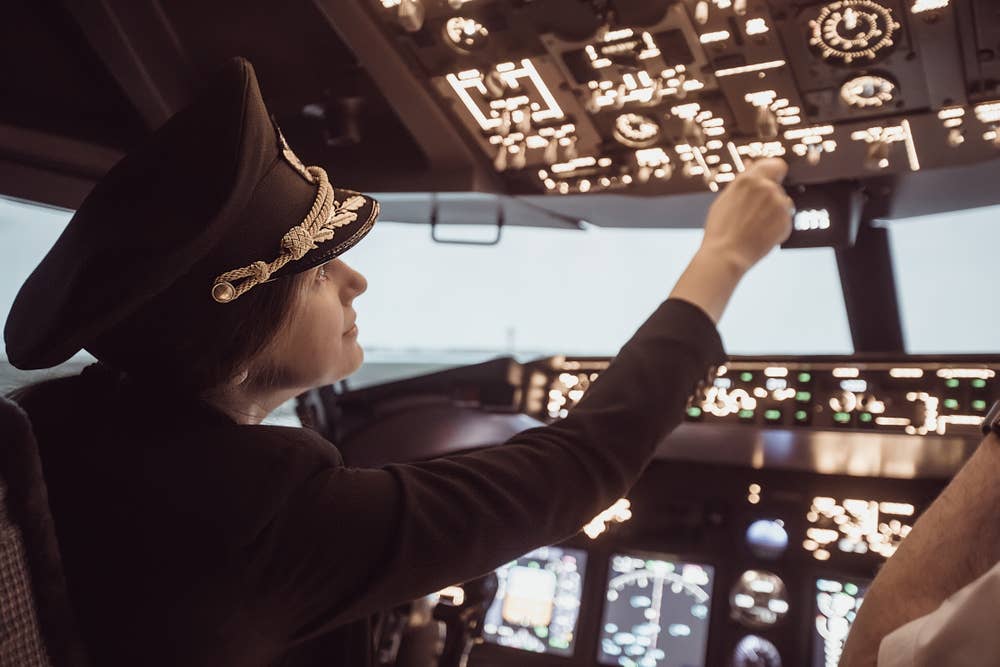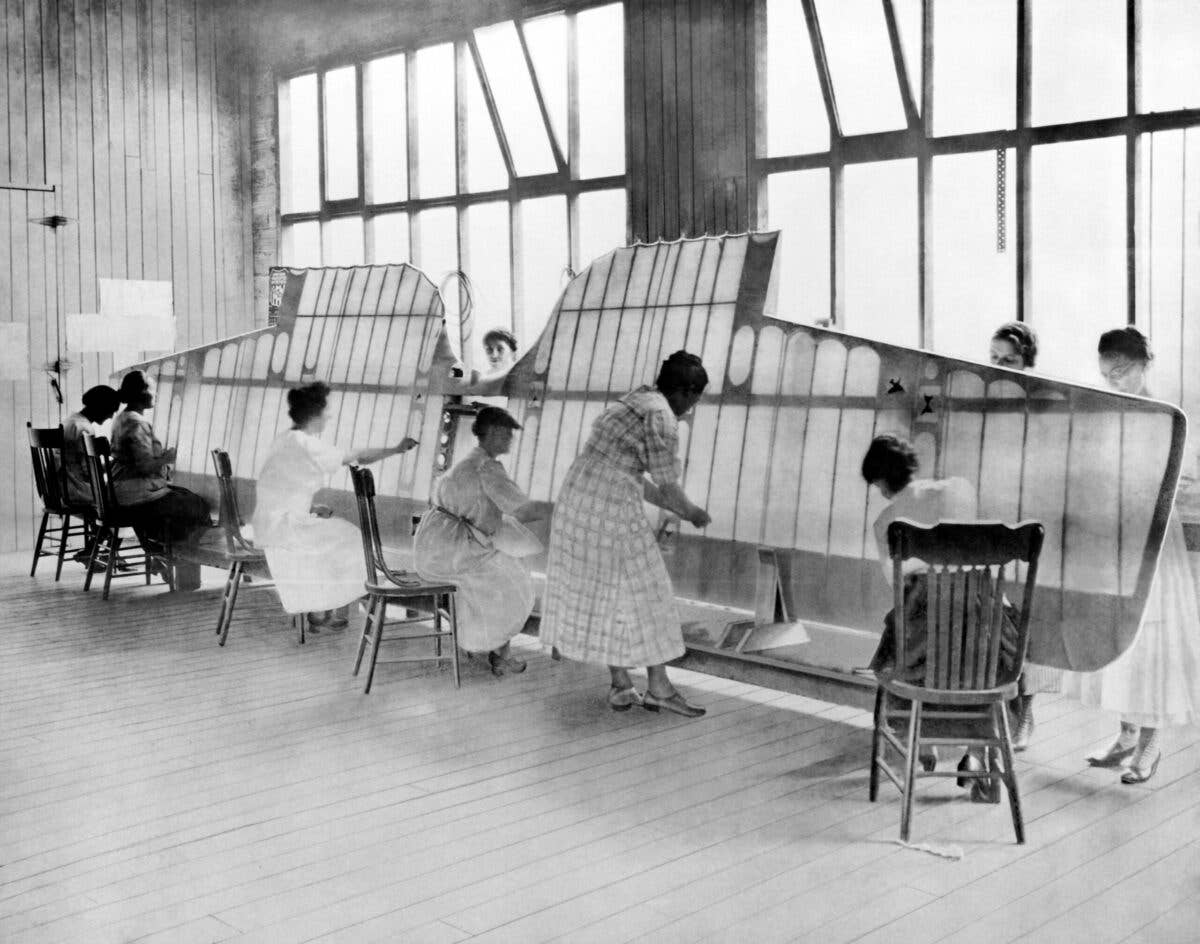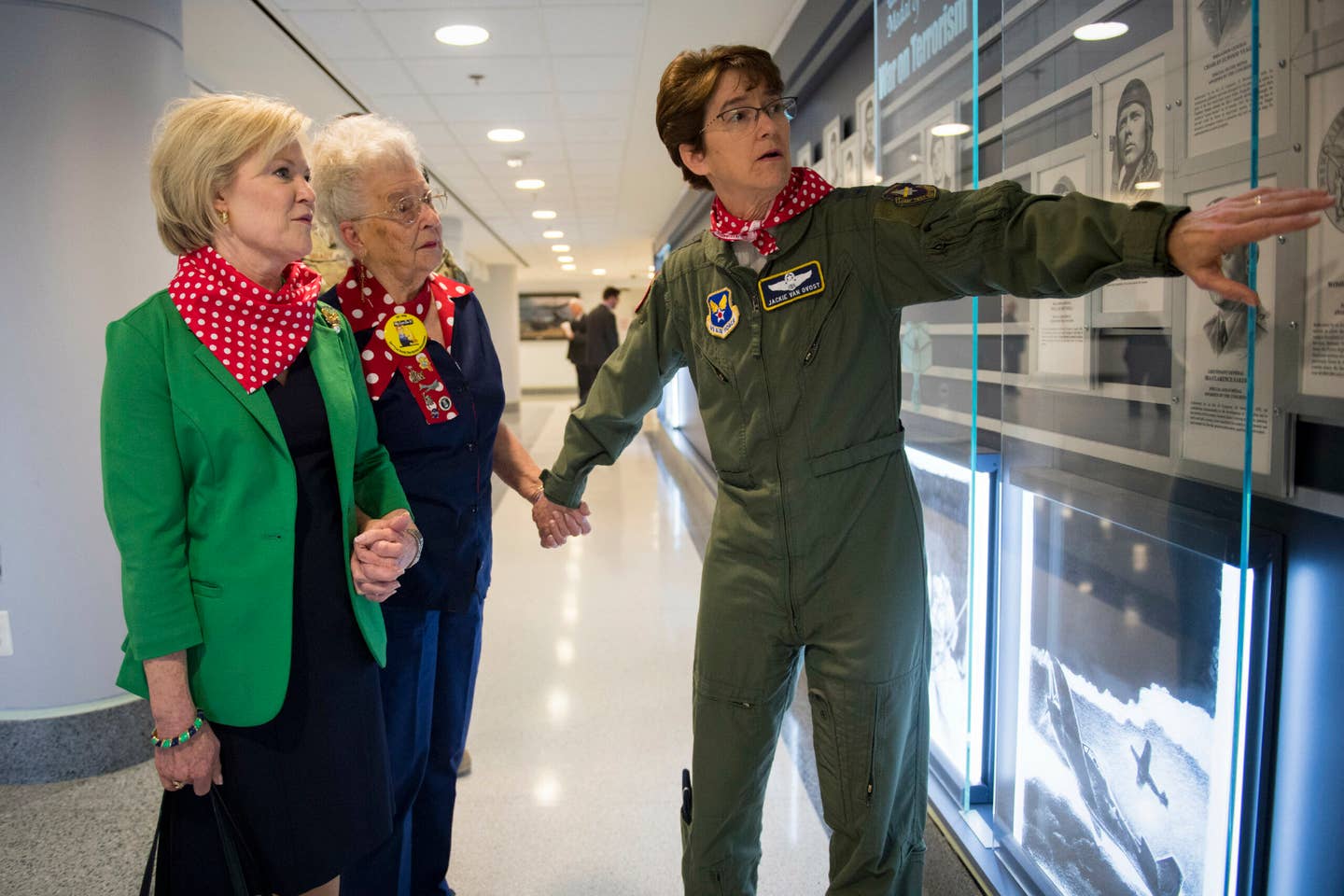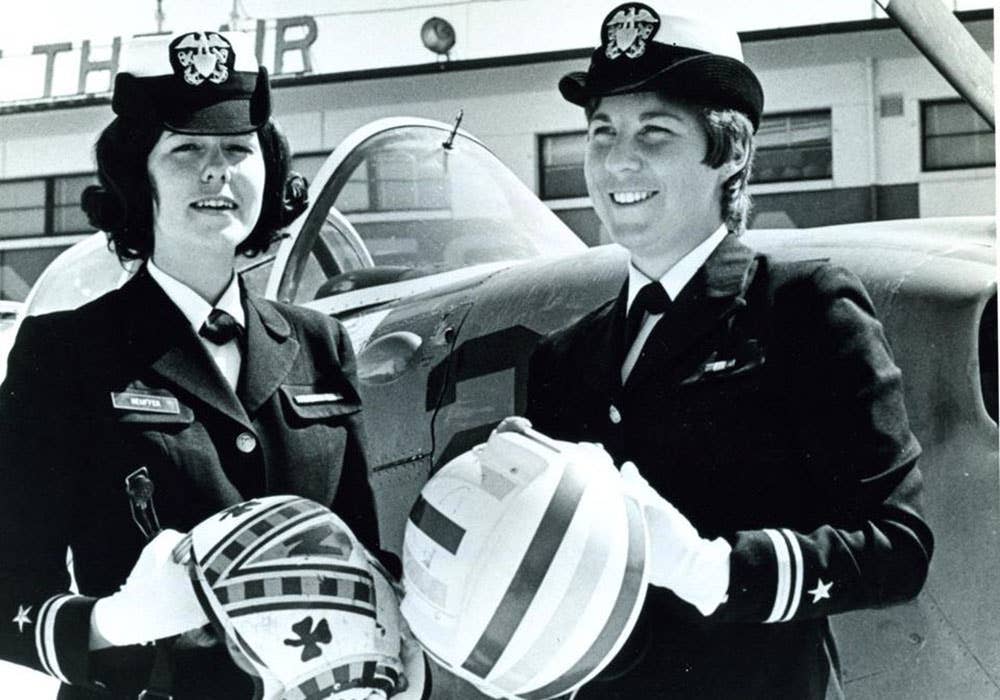The Legendary Life of Pancho Barnes, Aviatrix
Before becoming one of the first Hollywood stunt pilots, Barnes was a debutante who ran away to sea disguised as a man and traveled with revolutionaries in Mexico.
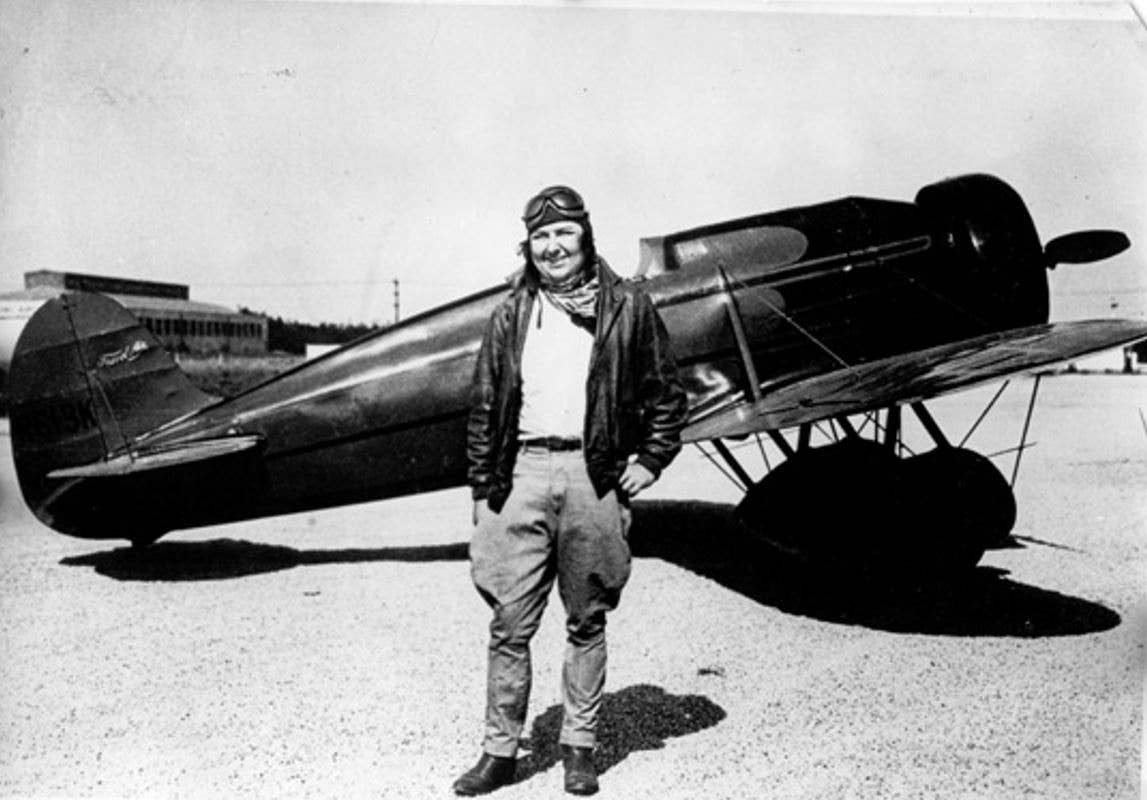
After her father died in 1928, Pancho Barnes used an inheritance to buy her first airplane. [Credit: San Diego Air and Space Museum Archives]
"Is she for real?"
That's the question I asked myself when I saw the 1988 made-for-TV movie "The Pancho Barnes Story" starring Valerie Bertenelli. I was a fledgling aviator at the time and just stumbled across this movie. I was transfixed.
Who was this woman who evolved from a tomboy to a southern California debutante, entered into an arranged marriage with a minister, ran away to sea disguised as a man, ended up in Mexico with revolutionaries, raced horses, raised dogs, learned to fly airplanes, become a movie stunt pilot, competed in the 1929 Women's Air Derby, set up a dude ranch next to an airbase and taught ground school to aviators as World War II approached?
This had to be all fiction, I thought.
A day later I was in the school library doing research. Although Hollywood did take liberties with the TV movie, they really didn't have too. Florence Lowe "Pancho" Barnes was more colorful than a bag of Skittles—so much so that when you read about her, you will find so many stories, you may wonder how much is fiction amid the facts.
Born into Privilege and Opportunity
Florence Lowe ``Pancho" Barnes was born July 22, 1901, to Thaddeus Lowe and Florence Dobbins. Her grandfather, Thaddeus S.C. Lowe established the Army of the Potomac's balloon corps during the American Civil War, creating America's first military aviation unit. He is credited with taking his then 10-year-old granddaughter to an aviation meet.
In those days, air meets were little more than demonstrations of airplanes flying around pylons set up at fairgrounds. As powered flight was still an emerging technology, these events drew a crowd similar to the way NASCAR does today.
In those days, women—especially those of privilege—were expected to marry early, often for convenience or to improve the family social position. At 18, Barnes married Reverend C. Ranklin Barnes. The marriage has been described by some biographers as loveless and passionless. It did, however, produce a son, William E. Barnes.
According to her contemporaries, Florence Barnes did not take well to either marriage or motherhood. After a few years as a minister's wife, she disguised herself as a man and headed to sea. Eventually she ended up in Mexico, where she rode horses and spent time with revolutionaries. It was here that she picked up the nickname "Pancho," which was a corruption of Sancho, the name of the sidekick of fictional Don Quixote.
She returned to the U.S. in 1928 after the death of her father. His death left Barnes with a large inheritance, and—intrigued by the idea of learning to fly—Barnes used the money to buy a Travel Air biplane. She then found an instructor to teach her. Six hours of instruction later, she soloed.
In those days, once a pilot was soloed, their training was pretty complete, as this was decades before the FAA was created and experience requirements and rules for private pilots were established.
Flying was more than a bucket list item for Barnes. She traveled around the country performing impromptu aerial demonstrations and barnstorming. By 1929 she had enough flight time to enter the first Women's Air Derby, a cross-country race from Santa Monica, California, to Cleveland, Ohio. In order to participate, the women had to have at least 25 hours of cross-country flying and 100 hours of solo flight. These were the same experience requirements for men competing in the National Air Races.
The idea of women performing in an air race was an oddity and to some, a joke. In fact, humorist Will Rogers referred to it as the Powder Puff Derby.
Despite the derision thrown their way, several of the 20 women in the race were accomplished aviators. Among them was Amelia Earhart, who had already set several records and was the most well-known aviatrix of the day. Also competing were record setters Louise Thaden, Ruth Nichols, Blanche W. Noyes, Phoebe Omlie, and Evelyn "Bobbi" Trout.
In the news reels, newspapers, and magazines of the day, the women were photographed wearing dresses and peek-a-boo hats. The exception, however, was Barnes, who stood on the end of the photo in her boots, jodhpurs, and jacket. She looked like she had just landed, or was ready to hike out if her airplane went down in rough terrain.
During the first Air Derby, Barnes was in the lead in the second leg of the race, but collided with a motor vehicle that pulled onto the runway during landing. Forced to drop out, Barnes came back the next year, flying a Travel Air Type R Mystery Ship sponsored by Union Oil Company.
Earhart came in third during the first derby. According to several historians, Barnes and Earhart did not get along well. They were opposites in personality and temperament. Earhart was slim and from a modest background. She was trying to work her way into the upper rungs of society, often helped by her husband, publisher George Putnam. She knew she was very much in the public eye, and good publicity would lead to sponsorships.
Barnes, on the other hand, was described as the most unlady-like aviatrix of her day, as she often wore pants and boots and a beret and smoked cigars. Both women competed for aviation sponsors and were allegedly skeptical of each other's abilities as a pilot. Barnes often referred to Earhart as a "puppet" or "windup toy," operating at the whim of her husband or her sponsors.
Pancho Goes to Hollywood
After her contract with Union Oil expired, Barnes moved to Hollywood to work as a stunt pilot for movies. The movie industry began in 1903—the same year of the Wright brothers’ first flight. The two industries were linked, as many people saw their first airplane on the silver screen. During the silent film era, stunt pilots routinely crashed airplanes into barns, buildings and towers for the delight of the movie going audience. Sometimes the pilots emerged unscathed. Other times they were killed or seriously injured—all to make a few bucks.
Barnes flew in several action adventure movies, including Howard Hughes’ "Hell's Angels." She is credited with organizing the Associated Motion Picture Pilots union which gave the pilots bargaining power to set a standard for pay and gave the pilots more control over the stunts to make them safer. The union also acquired medical insurance for pilots and, in addition to a weekly paycheck, made sure there were bonuses for performing riskier stunts.
The Great Depression hit Barnes hard, and in 1933 she used the remainder of her inheritance to buy a ranch in the Mojave Desert next to an army base. That base would later become Edwards Air Force Base.
Barnes and her then 12-year-old son William raised chickens and cows, and sold the eggs and milk to the servicemen stationed at the army base.
Barnes’ ranch was located on the Muroc Dry Lake bed. The hardpan was a perfect runway, so Barnes put in a small airport.
As the winds of war began to blow again, the number of men at the base began to increase. Barnes, seeing an opportunity, expanded her property to build a resort where the men could spend their off-duty hours. She offered horseback riding, and also added a large round swimming pool. It was one of the first pools in the county equipped with a ramp, which she used to ride her horse into the water to cool off after a ride.
The airport Barnes built on her property was expanded. When it was first constructed, her pilot friends landed there when they visited. When the Civilian Pilot Training Program began, Barnes taught ground school to persons who wanted to learn to fly. There were stories about her being goaded into providing the training after clumsy army pilot trainees crashed on her property or accidentally dropped a fake bomb that damaged a livestock pen.
The ‘Right Stuff’ Era
At the end of the war, the base evolved into Edwards Air Force Base, where Uncle Sam developed its most secretive airframes. The pilots who flew out of there were best of the best, with egos proportional to their skill. They often met their match in Barnes, who teased and taunted them in a friendly manner, offering a steak dinner to the first man to break the sound barrier.
The Barnes ranch had blossomed into a fly-in resort and dude ranch. In addition to the airport it had a motel, a bar, dance hall, restaurant, space for a rodeo and more than 60 horses for riding. In 1947 Barnes decided to limit the visitors to the ranch, making it a club for her closest friends—most of them famous aviators. It was said that none other than famed aviation pioneer and WWII commander Gen. Jimmy Doolittle came up with the name "The Happy Bottom Riding Club.’’
Barnes' life was one of parties, flying, and relationships—she married four times. In the 1950s, a change of command at the base put her sideways with the U.S. military, which wanted to take the land for a runway extension. There were allegations that she ran a brothel—an allegation she vehemently denied, saying the women who worked for her danced with the men who visited and that was it.
A mysterious fire destroyed Barnes ranch in the 1950s, forcing her to move. Today, the property that was her ranch is part of Edwards AFB. The remains of her famous round swimming pool and the airport can be seen with Google Earth.
In her later years, Barnes' health began to fail. She survived breast cancer and lived a simple existence in Hollywood, surviving by giving talks about her experiences and doing horseback stunts for the movies.
In March 1975, after failing to show up for a speaking engagement, a friend went to check on her and made a sad discovery. Barnes, who was living alone at the time, had been dead for several days. Her remains were cremated and her son, a pilot himself, received special permission from the USAF to scatter her ashes over the land that had once been her ranch.
Learn More about Pancho Barnes
- "Pancho: The biography of Florence Lowe Barnes" by Barbara H. Schultz
- "The Happy Bottom Riding Club: The Life and Times of Pancho Barnes" by Lauren Kessle
- "The Legend of Pancho Barnes the Happy Bottom Riding Club" available from Amazon

Sign-up for newsletters & special offers!
Get the latest FLYING stories & special offers delivered directly to your inbox

